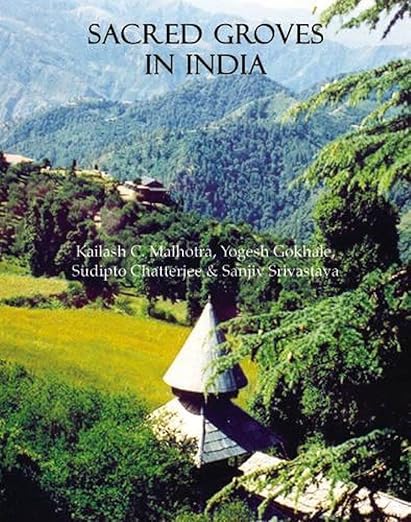In India, as elsewhere in many parts of the world, a number of communities practise different forms of nature worship. One such significant tradition is that of providing protection to patches of forests dedicated to deities and/or forests are known as sacred groves. The tradition is very ancient and once was widespread in most part of the world. The estimated number of sacred groves in India in about two laks. Grovers are rich heritage of India, and play an important role in religious and socio-cultural life of the local people. These ecosystems harbour many threatened, endangered and rare plant and animal species. The book covers various cultural and ecological dimensions of sacred groves in India, and describes recent initiatives undertaken by various stakeholders to strenghten this multifarious institution. About Author : Kailash C. Malhotra, an anthropologist and human ecologist has taught in Pune University and Indian Statistical Institute, Kolkata. He has carried out extensive research on anthrpological and ecological dimensions among tribals, dalits, nomads and village communities in different parts of the country. He has authroed over 20 books/monographs and has published over 350 research articles in Indian and forien journals. He is a fellow of the Indian National Science Academy and Indian Academy of Sciences, Bangalore. He was President of Indian Scoiety of Human Genetics. He has served as a member or chairman on various committees of Department of Science and Technology, Minsitry of Environment and Forests, Planning Commission, etc. Yogesh Gokhale is Phd in Ec... See more
In India, as elsewhere in many parts of the world, a number of communities practise different forms of nature worship. One such significant tradition is that of providing protection to patches of forests dedicated to deities and/or forests are known as sacred groves. The tradition is very ancient and once was widespread in most part of the world. The estimated number of sacred groves in India in about two laks. Grovers are rich heritage of India, and play an important role in religious and socio-cultural life of the local people. These ecosystems harbour many threatened, endangered and rare plant and animal species. The book covers various cultural and ecological dimensions of sacred groves in India, and describes recent initiatives undertaken by various stakeholders to strenghten this multifarious institution. About Author : Kailash C. Malhotra, an anthropologist and human ecologist has taught in Pune University and Indian Statistical Institute, Kolkata. He has carried out extensive research on anthrpological and ecological dimensions among tribals, dalits, nomads and village communities in different parts of the country. He has authroed over 20 books/monographs and has published over 350 research articles in Indian and forien journals. He is a fellow of the Indian National Science Academy and Indian Academy of Sciences, Bangalore. He was President of Indian Scoiety of Human Genetics. He has served as a member or chairman on various committees of Department of Science and Technology, Minsitry of Environment and Forests, Planning Commission, etc. Yogesh Gokhale is Phd in Ecology from Mumbai University. He has done extensive work on sacred conservation practices across the country. His research interests include the interface of human-nature interactions such as ecological value of various sacred conservation practices, and national and international policy frameworks such as Convention on Biological Diversity. He is Associate Fellow with The Energy and Resource






